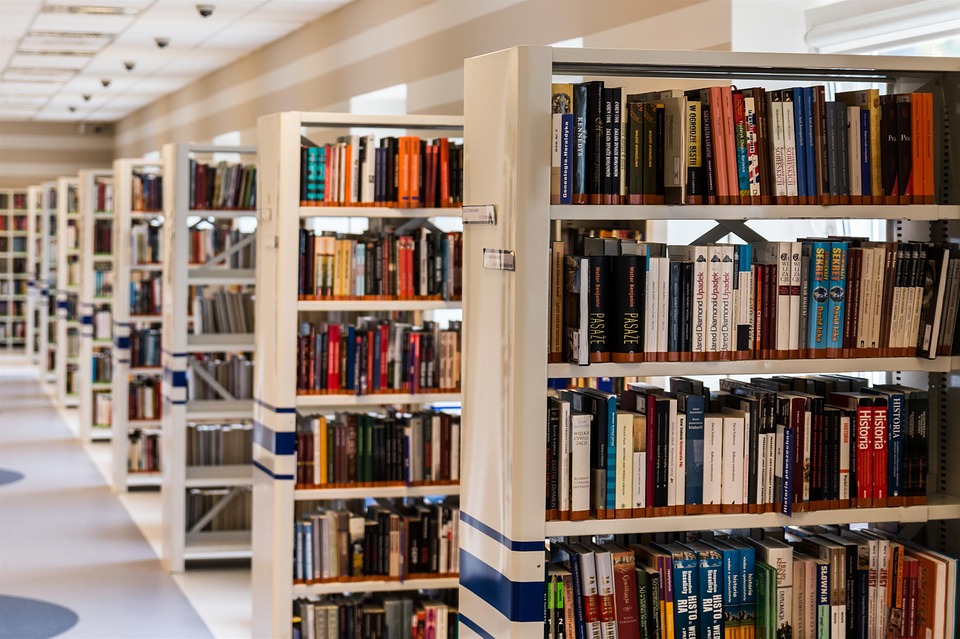
By Frankie Wallace
For a long time, libraries have served as sanctuaries for many students and teachers. Libraries aren’t being visited as often as they once were, but educators can still benefit from utilizing libraries in their lessons. Additionally, they provide a place of solitude and refuge from the hardships associated with day-to-day school life. Within the rows of books, there are other worlds to escape to, history to be revisited, and information to gather.
Library Importance
Many consider libraries to be dead because of today’s focus on technology. This is a common misconception; in fact, many libraries are thriving across the country. As a teacher, offering the chance for your students to spend time in their local library will continue the support that is needed for libraries to keep their doors open.
Including a visit to your local library in your curriculum can benefit your students. It is there they have access to the news stories and history of their town that they cannot find in any other library. Today, many of the libraries’ newspaper collections and historical photographs are being digitized and are available on their websites. However, research being conducted on students shows that information retention for data obtained in print is greater than digital media.
By enabling your students to become library patrons, you are empowering them to utilize a space that can act as more than just a place to study. In addition to access to information, libraries offer many benefits as an institution:
- They serve as a community hub and meeting place.
- They can offer a place for oral histories and storytelling.
- Libraries create ties and partnerships between community members and organizations.
The Internet’s Role in Change
Many people aren’t going to the library anymore because they can find answers to questions online so easily. The danger of the age of the internet, however, is the lack of credible sources. This has created a need for instilling critical analysis skills to enable our students to conduct effective research. Although there are a number of perks of the age of information, access to credible resources available at the library simply can’t be beat.
With a deliberate focus on sustainability in schools around the globe, many teachers and students are asking themselves how to lessen their carbon footprint — and the answer can be found in supporting their local library. For example, much of the population believes that by purchasing a book to read on their tablet, they’re helping to reduce waste. Many people also prefer to own their books, rather than renting them — but neither of these things are necessarily good for the environment. Especially after the rise of big booksellers like Amazon, it turns out that purchasing books online is actually worse for the environment than just borrowing the physical book from the library — whether digitally or not.
However, a lessened impact may be true when purchasing or reading books online in some communities. For those that live in rural areas, the combination of technology and library support can be found online. If a student or teacher possess a library card, they can gain access to any of the digitized material on the library’s website, including e-books. Making information gathering available to all populations has always been the goal of public libraries.
New Discoveries
Libraries provide a safe space for students to focus on their learning as well as access information from their numerous resources, including librarians, texts, and technological offerings. One study found that students whose first language is something other than English benefit from libraries the most. As a teacher, making libraries feel more available and beneficial may open new pathways for students you couldn’t have anticipated before.
As a teacher, placing your student in a library can offer an opportunity for them to discover new interests. What students see in their feeds and their searches on the internet are all tailored to their previous preferences. They see the same advertisements in their social media for video games and clothing lines as a result of their search history. Their newsfeeds are filled with reports from questionable sources and saturated with pop culture.
Introducing them to new sources of reliable information can open them up to a range of thought-provoking, diverse perspectives. From their pre-K years to the day they reach for their high school diploma, books can help children learn how to take better care of themselves, make informed decisions, and strive for greater social equality. For example, Kindercare lists nine books that can help kids learn how to eat better, potentially avoiding major chronic health conditions later in life.
Moreso, allowing a student to disappear among the stacks of books at their local library may offer a chance to explore new worlds they have never known. Fostering independent reading has been found to significantly increase vocabulary development and reading comprehension. It also empowers students with the ability to use different technologies and become more competitive when they enter the global workforce.
Due to the diverse offerings at the library, there is something to appeal to every learning style and individual student. As a teacher, the numerous educational tools are invaluable resources, enabling you to develop more cohesive and engaging lessons in your classroom. If you don’t have a library within your own school, consider scheduling your next field trip to explore your local library.

